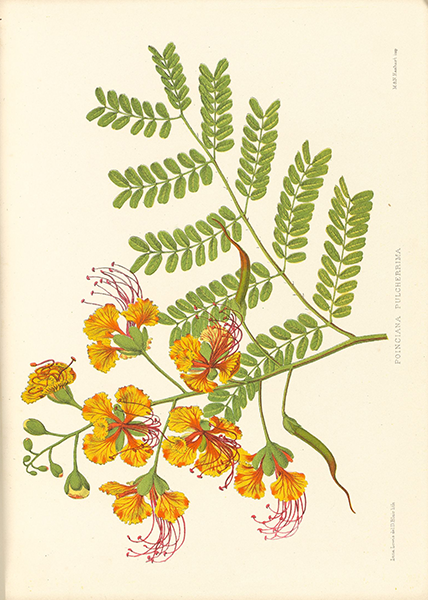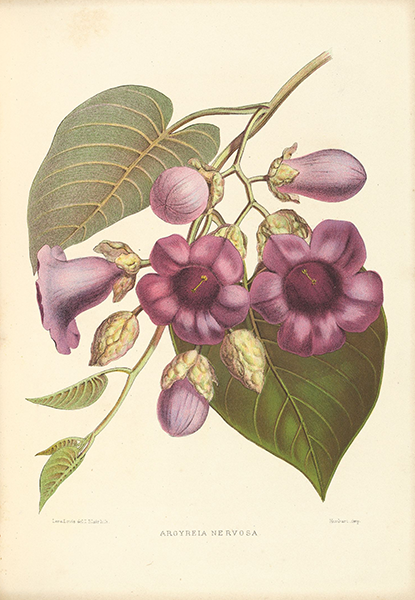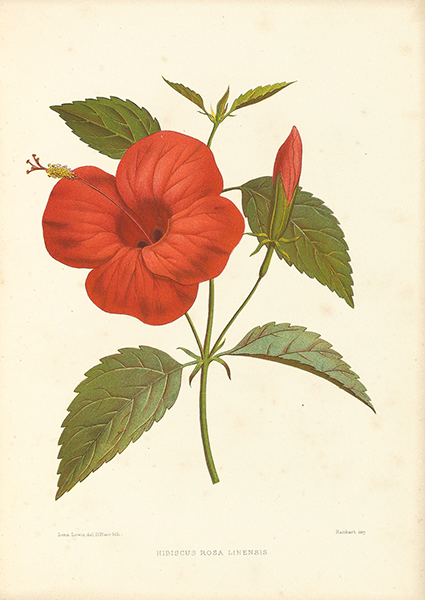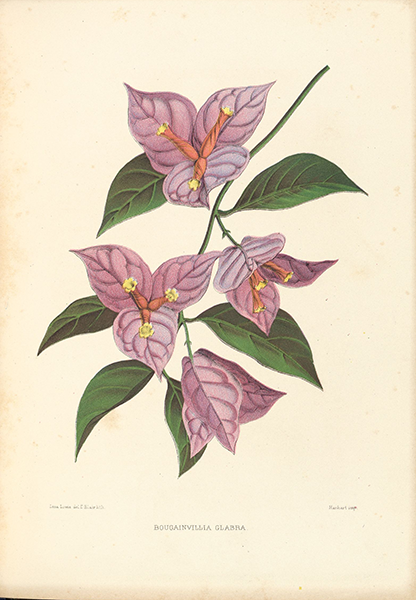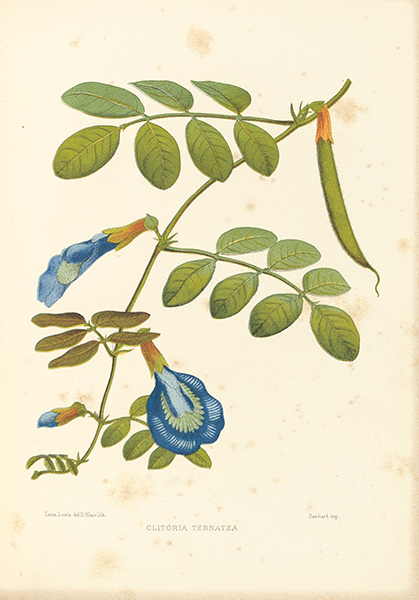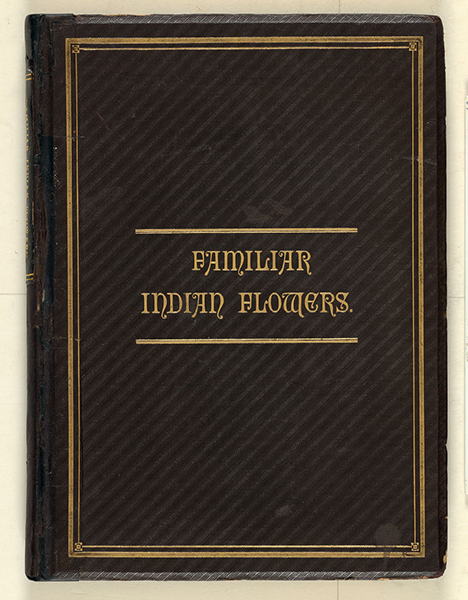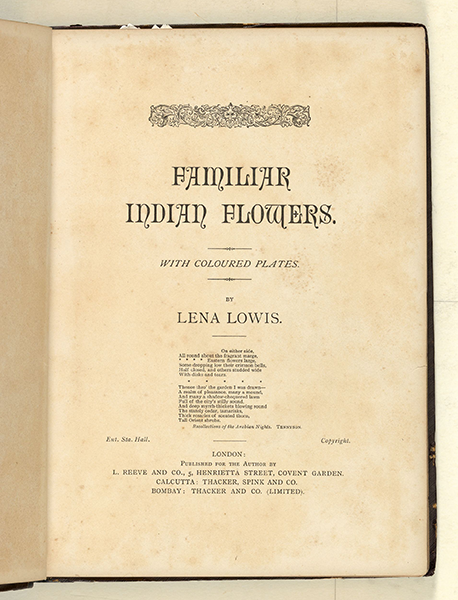Familiar Indian Flowers, with coloured plates, 1878, Lena Lowis © Sarmaya Arts Foundation
On either side
All round about the fragrant marge
… eastern flowers large,
Some dropping low their crimson bells
Half-closed, and others studded wide
With disks and tears
Thence thro' the garden I was drawn—
A realm of pleasance, many a mound,
And many a shadow-chequer'd lawn
Full of the city's stilly sound,
And deep myrrh-thickets blowing round
The stately cedar, tamarisks,
Thick rosaries of scented thorn,
Tall orient shrubs
Recollections of the Arabian Nights, Alfred Tennyson
The title page of Lena Lowis’s 1878 book, Familiar Indian Flowers, carries this fragment of a poem. It creates the ambience for what’s to follow: page after page of radiant ‘Eastern flowers’, drawn with nostalgic affection. Like Alfred Tennyson and other British artists of the Victorian Era (1837-1901), Lowis too was captivated by notions of the ‘picturesque Orient’ and moved to eloquence at the sight of a garden in bloom.
Born in 1845 to a British Army officer stationed at Gwalior, Selina Caroline Shakespear arrived at her pen name after marrying another Army man, Ninian Lowis. As she accompanied her husband around the colonies and back to England, Lena Lowis honed a talent for gardening and painting, both considered suitable occupations for English gentlewomen of that era. As this coincided with larger scale efforts by the imperial government to catalogue the flora of the Subcontinent, many women like Lowis contributed to building the botanical archives of 19th-century India.
One notable example was Lady Dalhousie, wife of the Governor General of India. During her time in India, Lady Dalhousie collected horticultural specimens, which were later donated to botanical gardens in England, as well as supported the expeditions of botanists like Joseph Dalton Hooker. Lena Lowis’s contribution was more artistic in nature and her objective in writing Familiar Indian Flowers was to give the British public a taste of the tropical paradise she remembered.
Published in 1878, Familiar Indian Flowers is a collection of paintings and observations by Lowis. Her original paintings were rendered as chromolithographic prints by another botanical artist, David Blair. The text accompanying each flower has notes on how to care for the plant, where it can be found, what it’s used for and the best ways to propagate saplings. While she cites the work of botanists like Richard Henry Beddome and William Roxburgh, the tone of Lowis’s writing is conversational, rather than academic. It’s directed at other ardent gardeners, rather than scientists.
Fortunately for Lowis, the British reading public shared her passion and Familiar Indian Flowers was a great success. Gardening has long been one of England’s favourite pastimes, thanks to the island nation’s temperate climate and abundant rain. The rise of colonialism fed this fixation. Garden writer and researcher, lecturer and teacher Noel Kingsbury writes, “Several centuries of being an imperial power saw plant-hunters set off with the explorers, the missionaries, the traders and the plunderers who were all a part of the story of empire.”
For the 21st-century Indian flipping through Lena Lowis’s book today, what might stand out is the exquisite rendering of flowers that are not exotic to us, but rather so near and dear. Most of the 30 specimens she records are seen commonly across our country throughout the year, like the crape myrtle aka Pride of India, the Rangoon creeper aka Madhumalti, the hibiscus, the bougainvillea, the gulmohar. Humble, profuse and ever beautiful.
References
Gardening - explaining a British national obsession? by Noel Kingsbury
Hong, Angel in the House, Angel in the Scientific Empire: Women and Colonial Botany During the Eighteenth and Nineteenth Centuries, Notes and Records: the Royal Society Journal of the History of Science, vol. 75, no. 3, pp. 415–438, Sep. 2021.
Familiar Indian Flowers, digitised version at BioDiversityLibrary.org
What is a Lithograph? Understanding Different Types of Printing, Invaluable.com

